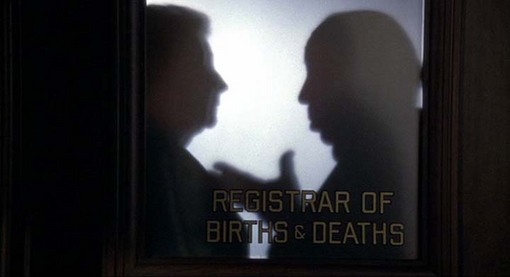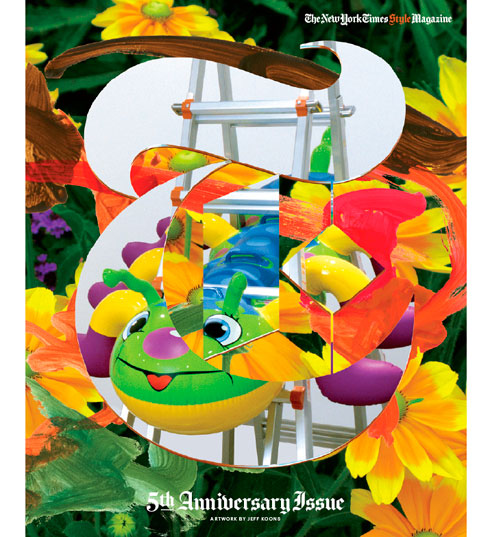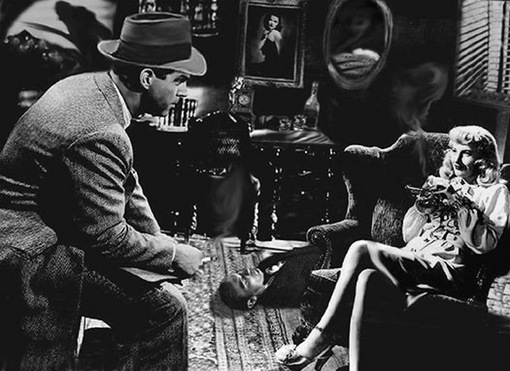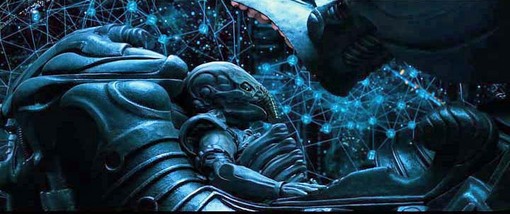Contrarianism Blog-a-Thon: Let the perversity begin!
JJ Hunsecker is calling YOU to participate in the Contrarianism Blog-a-Thon!
Presidents’ Day Special: What the heck, it’s a three-day weekend for some of us in the States. Now you have an extra day to contribute your contrarian wisdom — through Monday!
And thanks to all those who have already contributed and helped to spread the word. We’ve had submissions from all over the US — and Canada, France, the UK, Ireland, the Netherlands, the Philippines…
>
This weekend we’re saying to hell with the conventional wisdom. We usually say that anyway, but consider the Contrarianism Blog-a-Thon (Friday through Sunday Monday) an excuse to express how you really feel. You know, like Valentine’s Day is supposed to be, only more perverse. (Yes, more perverse!) So, I hope you’re feeling cranky.
Check back here for contributions that are sure to get you riled up or make your head explode with satisfaction as you appreciate the inherent wisdom of the cases made by cine-sthetes from across the blogosphere. Please send your contributions to me at the e-mail link above (jim at scannersblog dot com).
And please feel free to COMMENT on the submissions below. This endeavor requires some back-and-forth, don’t you think?
“For serious critics … the second-best thing to perfection is often the near-miss, the disreputable and even the despised. Next to discovering a new director, planting a flag in an uncharted national cinema or sitting next to Zooey Deschanel at an event, few things please a critic more than polishing a tarnished career or taking on a dubious cause, particularly if everyone else really hated it.”
— Manohla Dargis, New York Times, February 14, 2007
“I deeply believe that taste is a kind of prison for oneself – when a critic finds himself or herself always rigidly repeating the same opinions, the same positions, the same likes and dislikes (that is the kind of bad posture which Pauline Kael bequeathed to criticism). Critics should feel free to bring in their own emotional reactions to films – it is hard to keep them out of writing – but the phenomenon known as the ‘gut feeling’ or gut reaction can become a terrible end in itself: ‘this film makes me angry or it makes me happy, so it’s a rotten film or a great film, and I’m not going to discuss it any further.’ The important thing is always argument, analysis, logic. I have an irrational side (critics need it), but my rational side believes in logical demonstration: if you can prove to me that what are saying about a film makes internal sense, if you can marshal the evidence from the film itself to back up what you say, then I too can be persuaded to disregard my own first gut reaction and explore that film again in a new, more open way.” — Adrian Martin, Cinemascope, January – April, 2007
“There’s nothing I like less than bad arguments for a view that I hold dear.”
— Daniel Dennett
Contrarianism Blog-a-Thon (Feb. 16 – 1819, 2007)(UPDATED: 5 p.m. PST, Monday)
Kristin Thompson: Classical cinema lives! New evidence for old norms
Think classical film style is dead? Think again.
Peet Gelderblom @ Lost in Negative Space: Au Contraire (cartoon)
“The contrarian critic took issue with just about everything…”
Evan Qatsi: “You’ve Got Mail,” Gnosticism and Movie Snobbery
“YGM”: Reprehensible, but fun!
flickhead: It’s boring, but is it art?
“Last November I was sent a DVD screener of Theo Angelopoulos’s ‘The Weeping Meadow,’ and was so horrifyingly bored that I felt that all film in general was no longer worth writing about.”
Pacheco @ bohemiancinema: “Starship Troopers”: In Defense Of…”
“They’ll Keep Fighting, And They’ll Win!”
Piper @ Lazy Eye Theatre: Grandpa Joe The Imposter
“Contrary to what everyone has come to believe, Grandpa Joe is not the sweet, lovable old-man everyone thought he was.”
Squish @ filmsquish.com (The Film Vituperatem): “L’ Age d’or”: Weird & Wacky
“There’s the kind of film that deserves the highest of praise, and there’s the kind that needs to be strung up and beat like a piñata until its guts give its treasures…. but sadly this movie isn’t worth any of these intense emotions.”
Peet Gelderblom @ Lost in Negative Space (encore!): Boys like Peet are not afraid of wolves
“The best animated picture of 2006 wasn’t made by Pixar, Disney, DreamWorks, Blue Sky, Warner Bros. or Sony Pictures…. Hell, it wasn’t even released in the US last year.”
Oggs Cruz @ Oggs’ Movie Thoughts: “The Fountain”
“I viewed the three storylines of ‘The Fountain’ as existing in different dimensions…”
Brian Thomson @ stereoroid.com: Jackassism
“The shopping cart, a harmless symbol of domestic consumption, becomes a
conveyance; delivering its contents to the terminal checkout…”
C. Jerry Kutner @ Bright Lights After Dark: Why Murch’s “Touch of Evil” Doesn’t Make the Cut!
“I can’t imagine that Welles would have approved this evisceration of his work…. If you want to see the superior Second Studio Cut, you would have to know someone who has it on videotape or laserdisc.”
Bob Westal @ Forward to Yesterday: The Big Sleep — A Confession
“I am a filmnambulist. And it’s not just austere minimalists who can lull me into one of my cinematic siestas. If I’m tired enough, I can sleep through any universally acclaimed auteur.”
Jeremy Mathews @ The Same Dame: Contradicting the Contrarian
“If nothing else, the contrarian serves to push those in the majority to really express themselves, instead of standing around agreeing with one another.”
Kenneth R. Morefield @ the matthew’s house project: Contrarianism, “Munich” and Effective Arguments
“…I think that the usefulness of a contrarian review depends more upon the ethos of the reviewer than the rhetorical style or technique of his or her argument.”
Kenneth R. Morefield (redux!) @ All Things Ken: MacGuffins of Men
“In this day of marketing hype and review saturation, the difference between a contrarian review and an assenting review is often little more than a matter of which the viewer trusts more — the consensus opinion or his or her own two eyes.”
Campaspe @ Self-Styled Siren: Do the Contrarian: “Once Upon a Time in the West”
“… Leone’s camera doesn’t seem to care if we ever get interested or not. Again and again we return to the basic pattern of long shot (flat, sun-bleached, not terribly interesting desert) to close-up (flat, sun-creased, not terribly expressive face), close-up to long shot.”
Dennis Cozzalio @ Sergio Leone and the Infield Fly Rule: Nuts to “Brazil”
“… [T]oo much the showman, or the eager kid who wants to shock his parents by playing with poop and get pats on the back for it, Gilliam wears his depressive inclinations on his court jester’s sleeve. He wants credit for being a scatological imp and a serious buzz-kill at the same time.”
Harry Tuttle @ Screenville: Outlandish Dargis Empire
“This is a gameplay of course, as Dargis is a great critic and my tentative analysis is pretentious. Nitpicky mode intentionally exaggerated. For the fun of being contrarian, at least let’s not bash a little helpless reviewer, let’s go for the best and see where it takes us.”
Ted Pigeon @ The Cinematic Art: Transcending Time and Space: The Guilty Pleasure and the Problem With Film Criticism
“Which brings me back to the “Guilty Pleasure.” Such an idea only exists within an understanding of cinema as plot, and “content.” We then become conditioned to like certain genres and dislike others on the grounds of the kind of narrative they may embody. Coming from the approach that form creates content, we can open ourselves up to understanding that any plot or narrative can be executed effectively and interestingly in the medium of moving images we know as cinema. Viewers should not feel guilty for enjoying something.”
GD Williamson @ Where the Green Ants Dream: An Odyssey Through Contrarianism in Society
“This is why an American Contrarian, whether that’s Chomsky or White, is usually so angry and so fearful of dark conspiracies who push ‘their’ influence on the general public (and thereby reduce the influence of whichever Contrarian is complaining about it?). Britain, meanwhile, breeds people like Xan Brooks and the anonymous author of ‘101 Movies To Avoid’; people who can barely muster the energy to raise their eyelids, but want you to know that they’re dangerous and controversial all the same.”
Reilly Owens: Sancho Panza at the Wedding Feast: Last Action Hero
“Among the many amazing things Alfonso Cuarón’s ‘Children Of Men’ does is hang its story on the acts of an antihero. Not antihero in the classic Bogart sense — although Theo Faron seems to fit that mold: rumpled trench coat, hangdog expression, ‘I stick my neck out for nobody’ attitude. No, this character is something different, a new breed. He goes against the grain of the common action hero; he is a passive hero.”
Robert Humaneck @ The House Next Door: The Unscrupulous Side of Kubrick: “A Clockwork Orange”
“Real horrorshow, yes, but Kubrick’s orchestration of so much mayhem is lacking a much-needed ideological backbone…. Kubrick never takes the necessary next step in subverting the violence he engages us with.”
Tom Shipp (Comment): “Sunset Boulevard”: A Stylish Load of Hooey (My Contrarian Opinion)
“‘Sunset Boulevard’ is a cheap shot exploitation film wrapped in sheep’s clothing. Norma Desmond is a one note caricature beginning and ending the film cartoonish, one dimesional, and completely to blame for everything.”
Steve Carlson @ Blogcritics: “I Spit on Your Grave”
“As it turns out, ‘I Spit on Your Grave’ is not the hateful nadir of cinema. It is, instead, the ‘Unforgiven’ of the rape-revenge genre, in that it is simultaneously the perfect expression of and the eulogy for the genre. It’s as brutal and confrontational a cinematic work as I’ve yet seen; Zarchi reduces the genre ito its barest elements and in doing so asks the audience to consider why they are there in the first place.”
Dan Eisenberg @ Cinemathematics: More Like the Big Snoozefest
“I must have seen ‘The Big Sleep’ at least three times, trying to find out what is so good about it…. And so far I’ve come up empty handed. It doesn’t work as a noir or as a romance. And I’ve tried to make it work. I’ve looked at praises for it to see what I’m missing. Or maybe it’s what they’re missing.”
Neil @ The Bleeding Tree: “The Exorcist”
“Ultimately, the most reprehensible aspect of the movie is its unsubtle metaphor for a single mother raising an out of control child and her responsibility for allowing the Devil as well as ‘the devil’ to take her child’s mind and soul.”
Nobody @ Any Eventuality: Deconstructing “Babel”: “Epic Movie” and the Illusion of Continuity
“I can think of no more pretentious and self-important film than “Babel,” and “Epic Movie” is a devastating critique of the illusion of continuity attempted by Inarritu and Arriaga.”
Piper @ Lazy Eye Theatre (extra!): When Oil and Water Mix it’s “Punch Drunk Love”
“This movie is more than Adam Sandler and Paul Thomas Anderson going against type.”
Jeff Ignatius @ Culture Snob: Conventional Contrarianism: A Practical Guide
“A good contrarian will anticipate the buzz-and-backlash cycle of popular culture and must carefully position an opinion for maximum contrarian durability. Yesterday’s contrarian can quickly become today’s peddler of safe opinions.”
Noel Vera @ Critic After Dark “The Exorcist”: Scary Movie?
“… [After] after all is said and done, ‘The Exorcist’ isn’t exactly the great horror classic it’s all pumped up to be — certainly not one that can’t stand a little revision, and I’ll tell you why: It just isn’t evil enough.”
Andy Horbal @ No More Marriages! Some Possibly “Contrarian” Thoughts On Blogging and Blog-a-Thons
“They’re more valuable for collecting a variety of extant positions on a subject than they are for promoting a discussion on a subject, for moving towards a reconception of that subject. For someone who prides himself on being part of a community focused on conversation this upsets me to a certain degree.”
Andy Horbal @ No More Marriages! (x2!) Why I Like Jonathan Rosenbaum and Armond White
“I did not come here to defend these critics–that would, again, require legwork I haven’t done–but instead to talk about why I’m always interested in their criticism and suggest a possible approach for identifying (or not identifying) them as bona fide contrarians.”
Andy Horbal @ No More Marriages! (x3!) The Black Maria Film Festival
“I’ve been itching to write about the Black Maria Film Festival since I returned from the Pittsburgh screening of their touring program this Saturday, and I offer this post now in the “contrarian” spirit of championing contemporary “unseen cinema.”
Steve Carlson (the sequel!) @ The Ongoing Cinematic Education of Steven Carlson “Freddy Got Fingered,” or: Daddy, Would You Like Some Dada?
“In 1917, Marcel Duchamp signed a urinal and called it art. In 2001, Tom Green waggled a horse’s penis and called it a movie. The line of separation between the two actions is a lot thinner than would seem apparent.”
Pacheco @ bohemiancinema (he’s back!): “Any Given Sunday”: In Defense Of…”
“‘Any Given Sunday’ didn’t polarize the way ‘Natural Born Killers’ did, and after Oliver Stone made Alexander, the public’s new punching bag, his football opus seemed to fall off the radar, which I would argue is an even worse place to be.”
Pyko Moose @ Confessions of a Flick Junkie: A Pervert’s Guide to Faith: “The Good, The Bad, & The Ugly
“But the film does not so much function as a criticism of faith as a meditation on its nature. In the opening shot we witness the creation of Man: First a landscape, still and silent in its endless deadness. A dog howls somewhere beyond our range of perception, calling into existence (and into frame) an ugly, twisted face….”
Counter-arguments & subjects for further investigation:(These pieces weren’t necessarily written in response to Contrarianism Blog-a-Thon posts, but nevertheless contribute to further exploration of some of the posts above…)
Chris Cagle @ Category D: A Film and Media Studies Blog: Post-ClassicismA response to Kristin Thompson’s post, above.
CK Dexter, Scanners Comment: Re: Taste into Theory & “You’ve Got Mail”
“Of course there are good and bad movies…. Those who say otherwise do so in bad faith, as part of a pragmatic social contract in which I graciously grant you your own private You’ve-Got-Mail’s so that you, in return, will grant my own egregious lapses in taste an equal amount of tolerance.”
Matt Zoller Seitz @ The House Next Door: Theo Angelopoulos’ “The Weeping Meadow”(For HarryTuttle’s Contemplative Cinema Blog-a-Thon, January 2007)
“It finds a cool-headed but empathetic visual analogy for the way we tend to envision history: as anecdotes about masses of unknown people moving from place to place, enduring unimaginable suffering, then shaking off the pain, reinventing themselves and moving on.”
girish: On Film CriticismA terrific ongoing discussion in response to the Adrian Martin piece quoted above.
jmac @ girishshambu.com/blog: Comment
“There is such CONFORMITY in writing movie reviews, and furthermore, most people seem to ACCEPT this PROSAIC approach to WRITING a review. It’s horrible!!!… Manohla Dargis’s review was the first step in introducing some CREATIVITY to the NYT movie section…. I actually think that Manohla Dargis’s review of ‘Inland Empire’ was beautiful.”
J. Hoberman, Village Voice: L’Age d’or
“Thanks to his mastery of montage, Buñuel naturalizes Dalí’s images into a duplicitous rhythm of normality and outrage. The film suggests instances of sex and violence far more extreme than any actually represented while contriving effronteries so offhanded you can’t believe you’ve actually seen them.”
Kim Newman, Empire Magazine (UK): “Once Upon a Time in the West”
“Leone showed with ‘Once Upon a Time in the West’ that it was possible to honour the Western tradition while raising the artistic bar to such a level that nobody has made a better Western since. In fact, nobody has made a better Western, period.”
Preparatory postings:
Peet Gelderblom: The contrarian fallacy: Armond White vs. the Hipsters
David Bordwell: Indie Guignol
Dennis Cozzalio: Julie Andrews: Governess of Goodness or Nanny from the Netherworld?
Scanners: Do the Contrarian (Part I)
Scanners: Do the Contrarian (Part II)
Jim Emerson: The Big Lie
Yes, long before “Crash” there were movies that claimed to do one thing while actually doing the very opposite…







